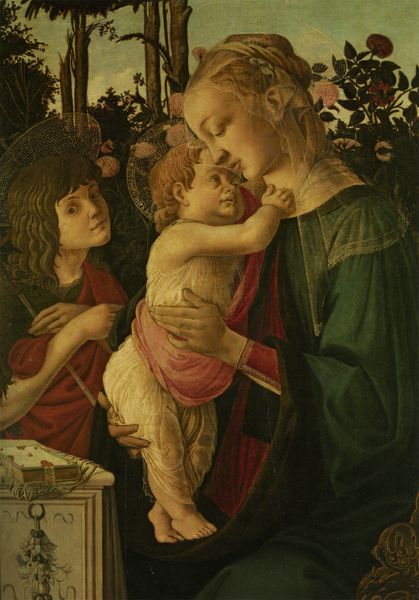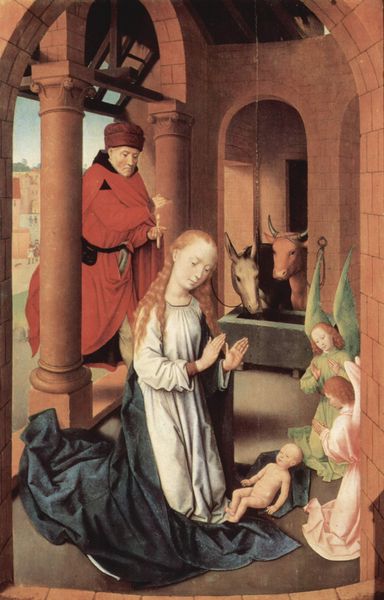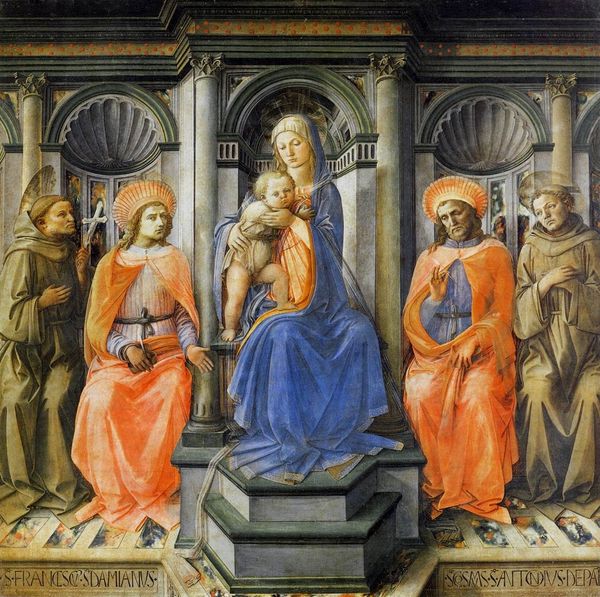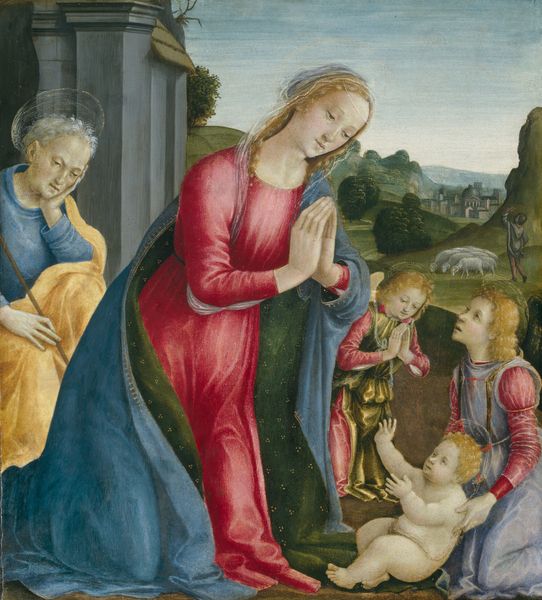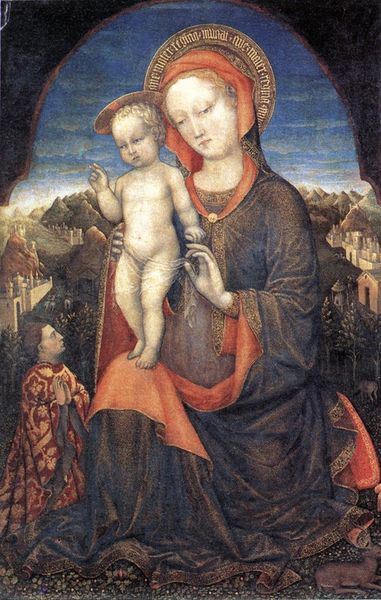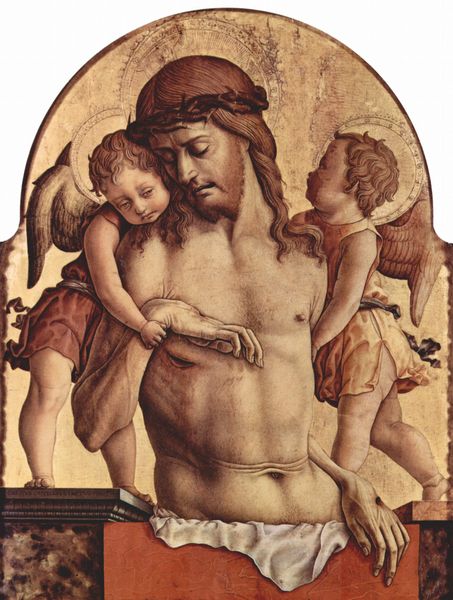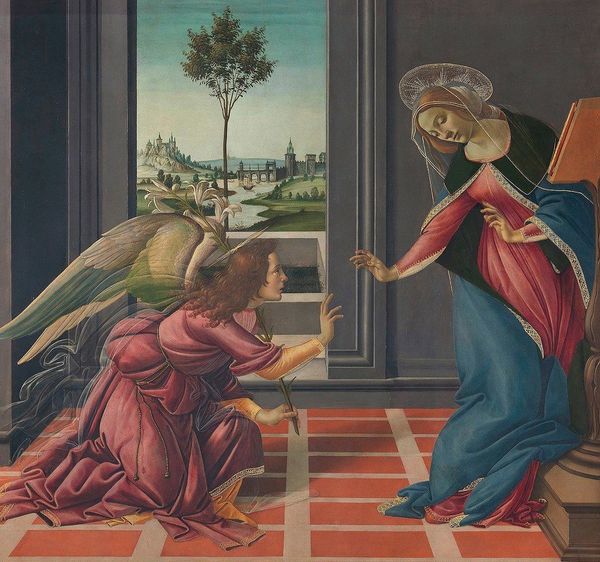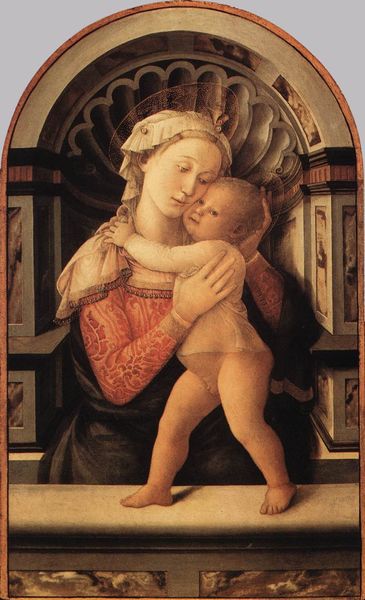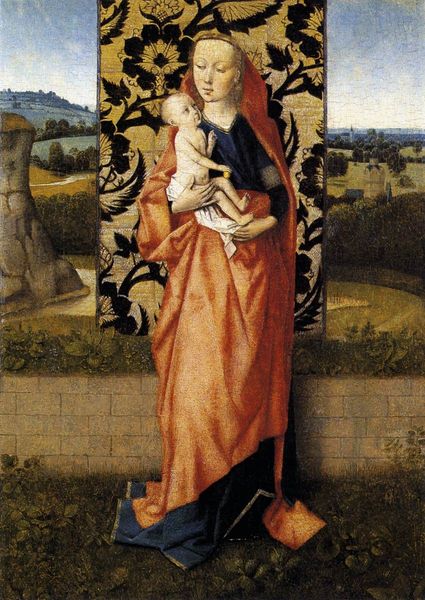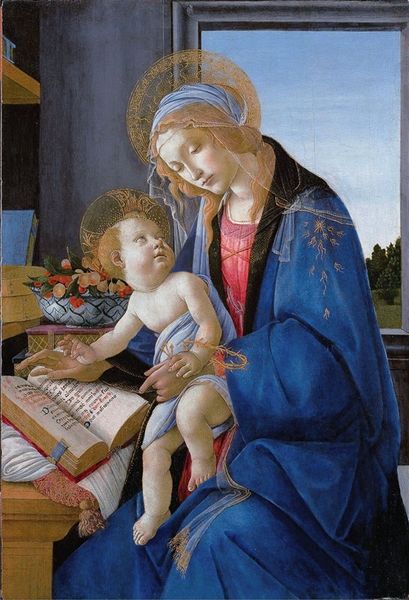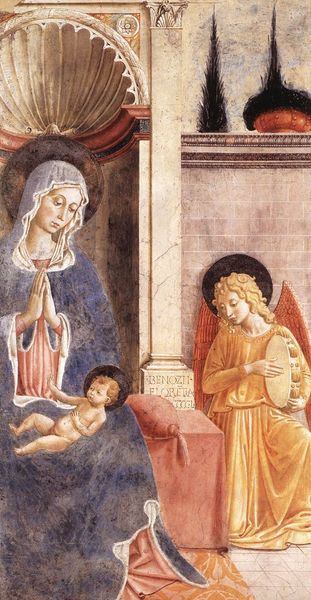
Virgin with the Child and Scenes from the Life of St. Anne (detail) 1452
0:00
0:00
filippolippi
Palazzo Pitti, Florence, Italy
painting, oil-paint, fresco
#
portrait
#
narrative-art
#
painting
#
oil-paint
#
sculpture
#
painted
#
figuration
#
fresco
#
oil painting
#
child
#
christianity
#
painting painterly
#
italian-renaissance
#
early-renaissance
#
virgin-mary
Copyright: Public domain
Editor: This is a detail from Filippo Lippi's "Virgin with the Child and Scenes from the Life of St. Anne," created around 1452 using oil paint, and it lives at the Palazzo Pitti in Florence. The scene looks rather industrious. The women appear to be involved in some kind of physical labor. How might we interpret this depiction through the lens of materiality and production? Curator: Seeing this scene, I'm immediately drawn to the raw materials at play, beyond just the paint and panel. The very depiction of labor, the woman carrying what seems like building materials on her head. Lippi compels us to consider the context in which art and everyday life were interwoven. We aren't simply looking at a religious scene, but an understanding of the economic realities that informed its production. Editor: That’s fascinating. It feels like a challenge to the idea of idealized, ethereal figures typical of religious art. Curator: Precisely. Consider the sourcing of the pigments themselves – lapis lazuli for the blues, perhaps, ground and prepared through extensive labour. Who were the people involved in providing these resources and how does their labour shape the very essence of this artwork? And notice that the tiled floors appear very craftsmanlike, a checker pattern not a divine intervention. Editor: So it's less about divine narrative and more about the human processes embedded within the creation and depiction? Curator: Indeed! We must explore art as a product of human work, material conditions, and even consumption. It isn’t enough to examine beauty. We should consider the economics of this fresco and reflect on its cultural impact. What choices are being reflected by what is consumed and included in the fresco? Editor: Thinking about art in this light really opens up a new way to understand the relationship between art, society, and work! Curator: Yes, moving beyond simple appreciation, and towards deeper insight into human realities that produced the Renaissance we all know.
Comments
No comments
Be the first to comment and join the conversation on the ultimate creative platform.
